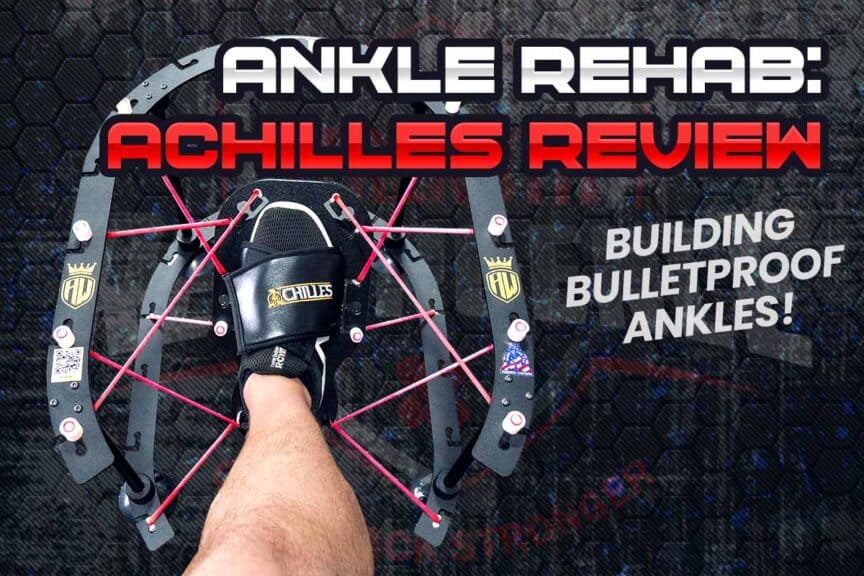The name Achilles comes from the Greek mythological hero. A supreme hero among all Greek warriors, Achilles was believed to be rather invincible, except, he had one weak spot — his heel. A mighty figure, Achilles was ultimately brought down by a strike of this very spot on his body. Nearly invincible, his mythological tale reminds us that a chain is only as strong as its weakest link.
A couple of months ago, I started using the Achilles, a patented ankle-strengthening device. I came across the Achilles online and knew it was a piece of equipment that would help many of my patients and athletes within the clinic. This is an exceptionally useful device for the right individuals, and this article will cover the essential information to know regarding this device. But let’s start with a quick takeaway:
The Achilles Pro is a multidirectional ankle strengthening device used for injury prevention and rehabilitation ranging from acute to chronic ankle issues. The device is simple to set up and use while offering multiple levels of resistance for all ankle movements.
Naturally, you’ll want to know more than that if you’re serious about building bulletproof ankles, but now that you have a taste, let’s dive into the details.
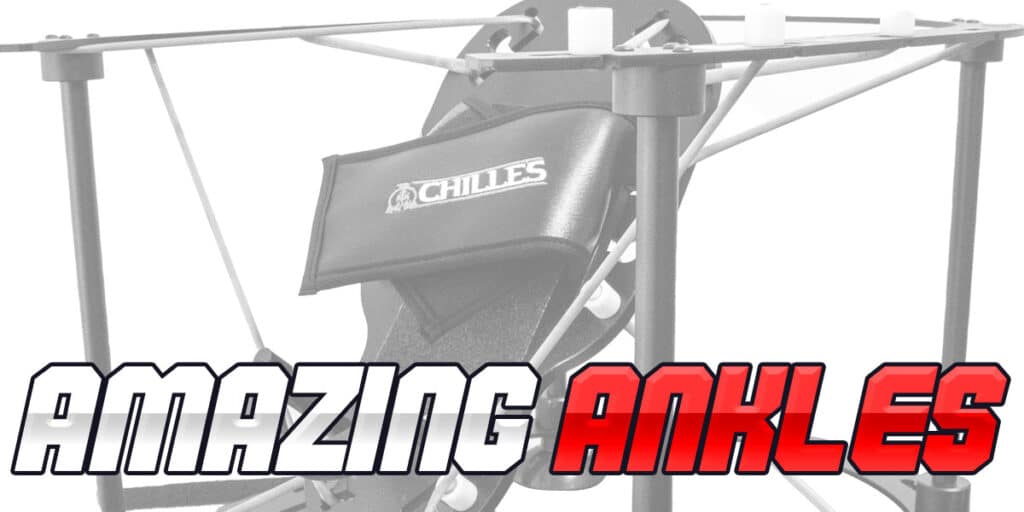
A small request: If you find this article to be helpful, or you appreciate any of the content on my site, please consider sharing it on social media and with your friends to help spread the word—it’s truly appreciated!
DISCLAIMER: I reached out to the Achilles team and requested a collaboration. Their team provided me with the device as part of this collaboration. All thoughts and opinions about this device are my own; the Achilles team does not get any input into what I say, nor do they get to see this article before it is published. I do NOT have an affiliation with this company.
Reaching out: I saw something the world needed
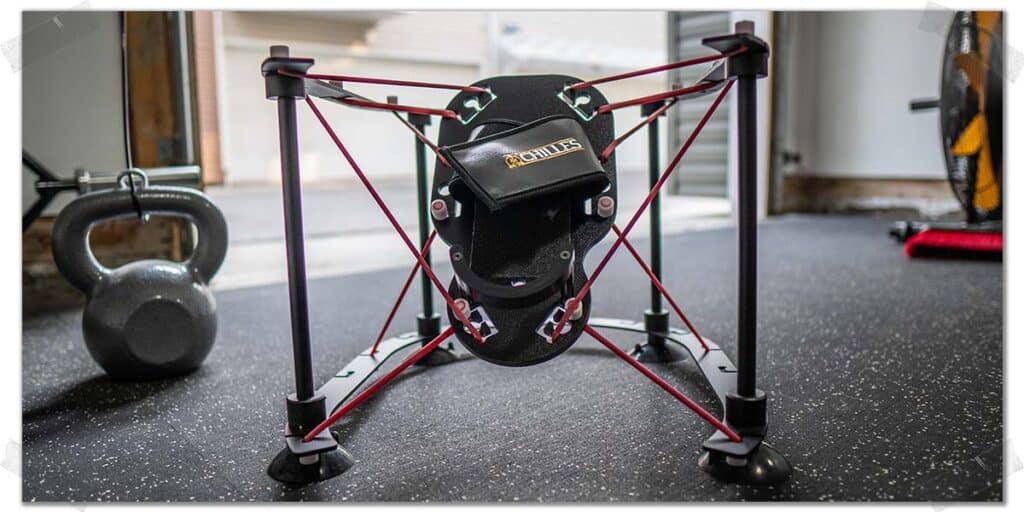
Why did I reach out to the Achilles team? Because the second I saw this device, I knew it had a place in my rehabilitation efforts for many of my patients (I was not wrong on this, either — it’s been outstanding). I also knew that should the device meet my standards (it has), spreading the word about this device would be the right thing to do; I consider doing this to be one of the many ways I can help make a positive mark in the rehabilitation world.
You’re getting my honest thoughts throughout this entire article (and any subsequent content I generate on this piece of kit). As a solo content creator, generating content takes a lot of time and effort, and to generate content on a device that doesn’t have my full support wouldn’t be worth my time.
Click HERE to follow ACHILLES on Instagram!
“Despite its name, it’s imperative to know that this device can be configured and utilized to treat more than Achilles tendon issues. “
Origin story: What the rehab world needed
They say that necessity is the mother of invention. Chalk that up to being a true statement. I was fortunate enough a few months back to spend time on the phone with the inventor of the Achilles Pro, Mr. Trey Villarreal. Trey has a remarkable story of perseverance that’s separate from his invention process of the Achilles.
But when it comes to the invention process itself, Trey was generous enough to provide me with the backstory about how he came up with the device. A high-level athlete dealing with chronic ankle issues himself, Trey was simply looking for a way to take care of his own troublesome ankle and not even considering the potential for how he had begun creating something that could help others. (I told Trey he’d make a brilliant physical therapist, as he seems to have a knack for problem-solving.)
Unbeknownst to Trey, the world desperately needed what he had begun crafting; the world of injury rehabilitation is sorely lacking when it comes to multidirectional ankle strengthening, particularly for those who are unable to weight bear (think post-fracture or post-surgical populations) but are cleared for general strengthening as tolerated.
Related article: Why You Have Ankle Pain When Squatting (And How to Fix it)
It wouldn’t be until one day, when Trey headed off to a team practice, that his athletic training staff saw his ankle device (he brought it with him) and asked if there was a way he could make one for the team trainers to use. Word of this device caught fire within the athletic training facility, planting a seed in Trey’s mind, and I think you can see where the story leads.
Trey’s device is now trusted and used worldwide by the highest-level sports teams, ranging from the NBA to the NFL. But of course, you don’t have to be a professional athlete to use it or receive its benefits.
Uniqueness: Unrivalled strengthening versatility
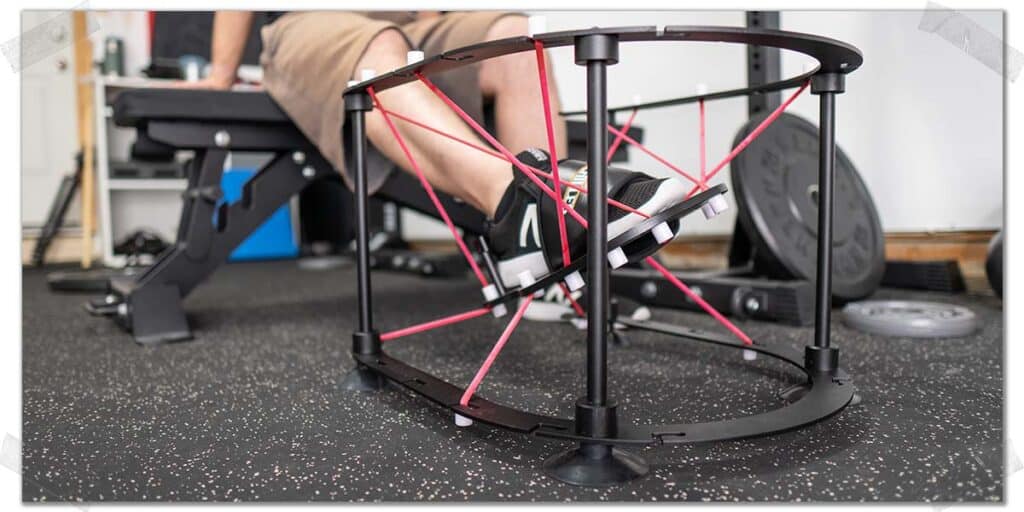
There is a heck of a lot that separates the Achilles from all other ankle rehabilitation devices on the market. To be clear, many of these other devices are also outstanding, but the Achilles offers much of what other traditional ankle rehab devices don’t, including:
- Multiple levels of resistance (via interchangeable bands)
- Multiple band configurations for biasing different angle movements
- Targeting all major ankle movements (dorsiflexion, plantarflexion, inversion and eversion)
- The ability to perform exercises while either sitting or standing
- Portability (the device can be disassembled and assembled as needed)
Despite its name, it’s imperative to know that the device can be configured and utilized to treat more than Achilles tendon issues. The beauty of the device is that multiple band configurations can be utilized, allowing for biasing and targeting different movements and subsequent soft tissues for strengthening.
Using the device: Straightforward as can be
The Achilles is straightforward to use — one of its many strong points. It all starts by determining the extent of resistance you (or your patient) will need and picking the corresponding band color.
From there, you have multiple options for configuring the bands around the cage, which will be based on the muscles and tendons you’re looking to target. Achilles does an excellent job providing instructions for hooking up the bands for various configurations, so you don’t have to worry about trying to figure things out on your own. Once you’ve configured the bands accordingly, just strap your foot in and away you go.
I should also quickly mention that assembling the cage is incredibly straightforward and the process of configuring the bands only takes a minute or two.
“Every clinic I’ve ever come across has no shortage of balance-based ankle rehabilitation devices, but few of them have dedicated strength-based equipment for this part of the body.”
A quick note on floor surfaces
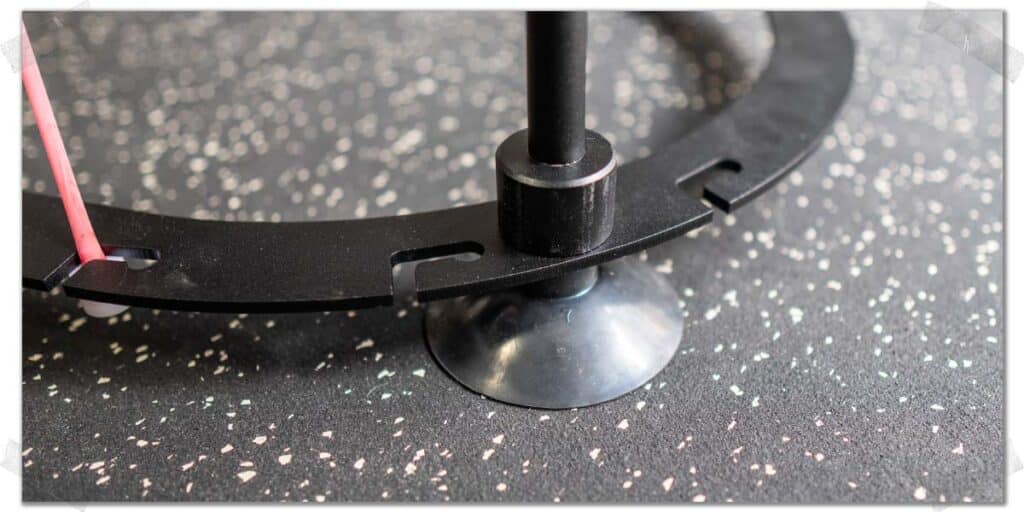
For configurations involving resisted dorsiflexion (the movement of pulling your foot up towards you), you’ll need to make sure the cage is secured in place; otherwise, you’ll pull it around as you pull your foot up.
How you secure the Achilles to the floor will depend on the floor surface on which it rests. The Achilles rests on four suction cups, so if you use the device on non-porous surfaces, they will stick firmly to the floor and you’ll be ready to go.
You’ll need a different strategy, though, if using it on non-porous surfaces. There are different ways to do this; you can use a specialized metal bar that holds a weight plate that rests on the Achilles device (this specialized bar is sold separately) or you can get creative. I do the latter and place a ten-pound dumbbell on each side of the frame (the dumbbell handles rest on the frame) and this works perfectly.
Related content:
Build quality: Hitting the mark
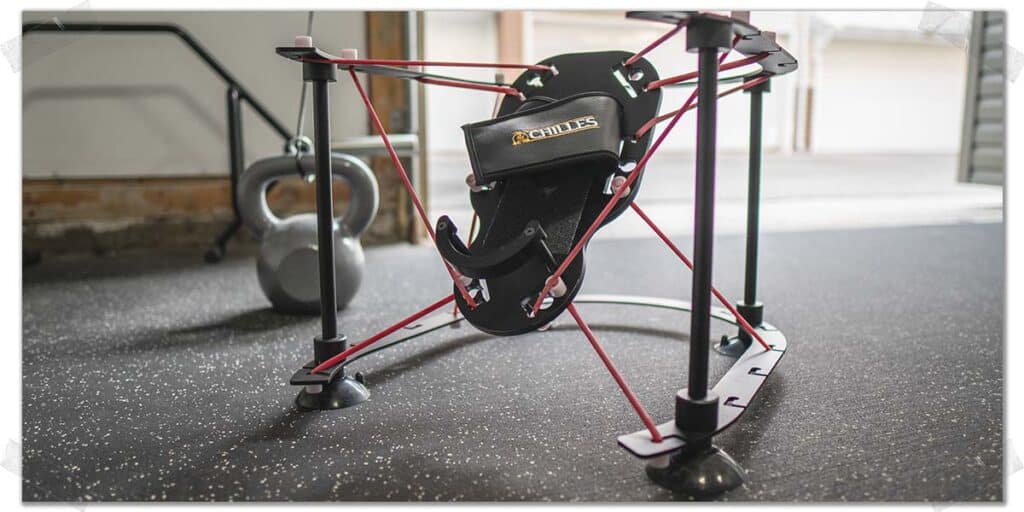
Trey and his team have hit the sweet spot when designing a piece of equipment that is robust enough to last but light enough to transport without being a pain in the butt to do so.
As the device essentially consists of nothing more than a metal frame with a few suction cups, resistance bands, and a foot plate, I don’t have any concerns about its overall longevity. The frame is sturdy enough to meet the demands of various and vigorous ankle routines but also light enough that it can be easily transported (it’s exceptionally easy if you have the custom backpack that houses the device.
Ideal population: Who is this device for?
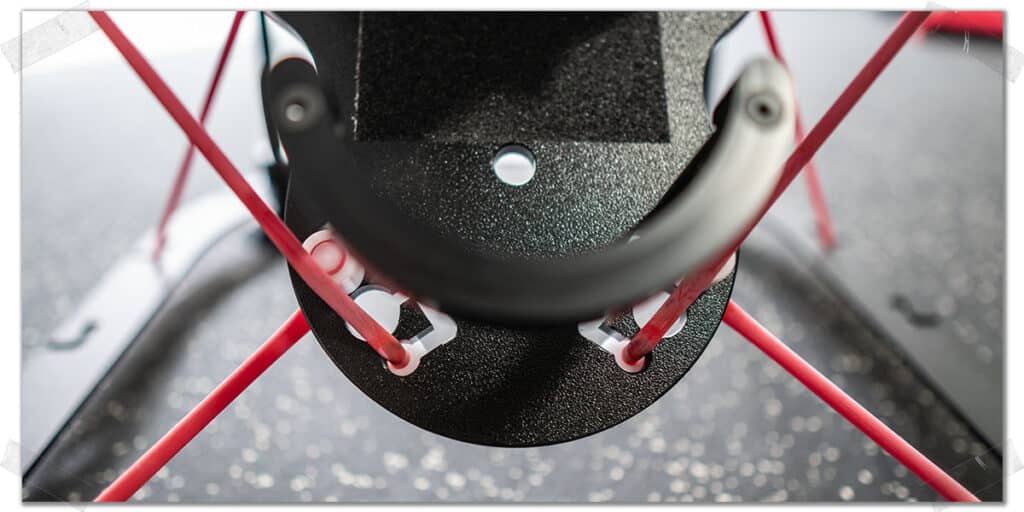
One of the many beauties of the Achilles Pro is its application to various settings and environments. From home use to travel-based populations and clinical use, there are a variety of settings that lend themselves nicely to the Achilles. Below are a few examples.
Sports teams (Athletic Therapists, S&C Coaches, etc.)
Athletes of practically any sport arguably rely more on their ankles than any other part of their body. After all, these things are the foundation for the necessary movement, balance, and performance that is ultimately required to be transmitted up the kinetic chain into the rest of the body. Massive amounts of whole-body strength, power, or other sport-specific abilities won’t amount to much if the foundation of the body is weak, injury-prone, or painful.
Since the Achilles can help athletes as much as it can non-athletic populations, those who work with athletes (either directly with a team or indirectly) can benefit from incorporating it into their athlete’s regimens, either for preventative or rehabilitative means. As such, athletic trainers, strength coaches, and other professionals involved with sports teams can consider the Achilles to be an ideal piece of kit for their population(s).
Additionally, these professionals are no strangers to needing versatile equipment that can serve an entire team of athletes without being cumbersome to use or a hassle to transport. The Achilles also checks the box with these requirements, further solidifying its significance as an outstanding piece of kit for these populations.
Related article: Four Handy Exercises to Help Loosen Stiff Ankles in ALL Directions
Rehabilitation clinics (physical therapy, osteopathy, etc.)
Any clinic (notably physical therapy clinics) involved with orthopedic rehabilitation will frequently evaluate and treat patients with various ankle injuries and conditions, whether athletic or non-athletic individuals. As such, the Achilles lends itself perfectly as a piece of equipment that can optimize treatment and outcomes for either population looking to bounce back from injury.
For a professional clinic, it’s not like this device will break the bank, and it certainly doesn’t take up precious floor space, either. Every clinic I’ve ever come across has no shortage of balance-based ankle rehabilitation devices, but few of them have dedicated strength-based equipment for this part of the body.
For my own patients, along with those of my colleagues, here is a list of some of the ankle injuries and conditions we believe the Achilles Pro to be helpful for:
- Tibialis posterior tendinopathy
- Plantar fasciitis/fasciopathy (research is clear that strengthening the lower limb can greatly help treat and prevent this all-too-common issue).
- Inversion & eversion sprains
- Achilles tendon rehab (based on various factors)
- Tibialis anterior weakness/L4 radiculopathy
If you know me, you know that I do all that I can to get my hands on equipment that can help my patients when treating them in the clinic and my athletes when training them in the gym (I work in a physio clinic downtown and train athletes in a gym at a separate location and having portable equipment is vital for my operation as a physio and strength coach).
Individual users (home use)
For those considering purchasing an Achilles Pro of their own, there are numerous benefits to be had. However, there are a few considerations I would keep in mind:
- This device isn’t necessary for a casual one-off ankle injury such as a simple inversion sprain; this would be overkill and their are plenty of ways to rebound from a one-off minor ankle tweak. Purchasing this device is best left to those with chronic issues or those coming back from major trauma, such as an Achilles rupture, peroneus longus repair, etc.
- Purchasing the Achilles should be seen as an investment; this isn’t a cheap piece of kit for most individuals. However, anyone dealing with chronic ankle issues or those wanting to keep their ankles in top-notch condition will likely see dividends on this investment when compared to the alternative (multiple physical therapy sessions, lost time from injury, etc.
Final thoughts
Trey and his team have devised a piece of ankle equipment that the world has long needed, especially for those of us who make our living treating individuals with various ankle conditions. Are there plenty of other great ankle devices on the market? Of course. But the versatility, practicality, and uniqueness of the Achilles makes it a piece of equipment that’s hard to pass on.
I’m thrilled that there are brilliant and determined minds out there who have the ambition to bring their ideas to life.

Hi! I’m Jim Wittstrom, PT, DPT, CSCS, Pn1.
I am a physical therapist who is passionate about all things pertaining to strength & conditioning, human movement, injury prevention and rehabilitation. I created StrengthResurgence.com in order to help others become stronger and healthier. I also love helping aspiring students and therapists fulfill their dreams of becoming successful in school and within their clinical PT practice. Thanks for checking out my site!

